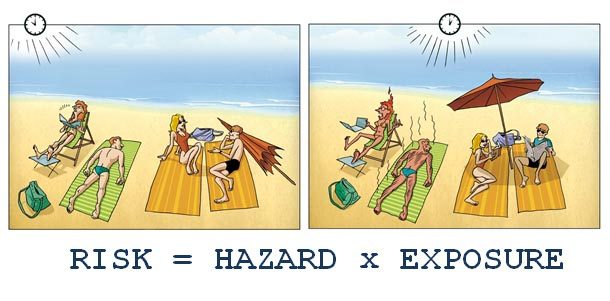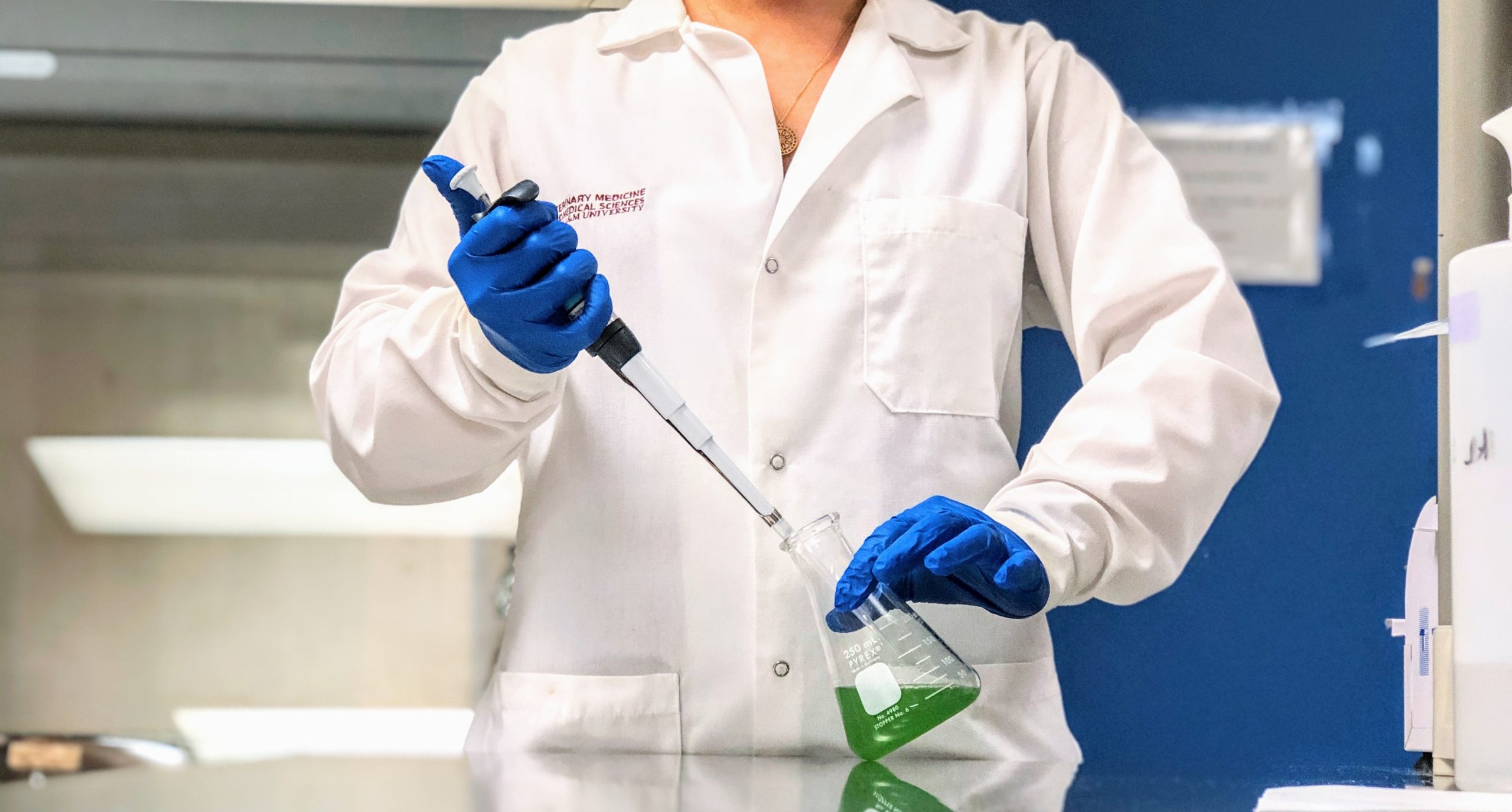If you’ve been following along with me on Instagram, you might know that I’ve started something called Tox Talk Tuesdays. Basically, I take a topic in toxicology and try to break it down into short, palatable, and easy to understand pieces. However, since they are short, I wanted to take a second to elaborate on a concept that is very important in toxicology: Risk.
Definitions
First, lets start with some definitions –
- Exposure: how you come into contact with a hazard
- Hazard: a potential source of harm
- Risk: the chance or likelihood that harm from a specific hazard will occur
- Dose: the amount of a substance received at one time
Exposure
Exposure is a key factor in determining whether a substance poses risk or not. The term exposure refers to both the way in which you are exposed, but also the length for which you are exposed. Here I will refer to these as the route of exposure and the length of exposure.
Terms we often use to describe length of exposure are ‘acute’ and ‘chronic’. Acute exposure refers to short term contact (usually hours) whereas chronic exposure refers to long term contact (usually more than a year). Of course there are also lengths in between these two which we may refer to as sub-acute, sub-chronic, or intermediate exposures. The length of exposure is a huge factor in determining how a hazard affects you (1). For example, short term exposure to the sun probably won’t have much effect on your skin, but long term exposure can result in harmful burns and even skin cancer over time.
The second part of exposure is the route of exposure (2). Some common routes of exposure include ingestion (eating or drinking), inhalation (breathing), absorption (through the skin), and injection. Once a hazard has entered the body, other processes such as metabolism, storage, and excretion all influence the substance’s effects. The route of exposure to a hazard greatly influences the associated risk. For example, if you are lactose intolerant, touching dairy will not cause you any harm (it does not absorb into the skin). However, ingestion of dairy will give you a very upset stomach.
Hazard
When thinking about whether a substance or situation is a hazard, a toxicologist must evaluate the types of harmful effects that could occur, but also under what circumstances. Hazard identification refers to the process in which information is collected to deem something a hazard (3). During a hazard identification, a toxicologist would create what is known as a hazard profile for the substance by identifying the ways in which the substance could potentially cause harm as well as the amount of exposure that would be required to achieve those effects.

Risk
Risk is defined as the chance or likelihood that harm from a specific hazard will occur. To be able to define the risk, we use the following equation:
Risk = Hazard x Exposure
Here’s an example: Any body of water would be considered a hazard because someone could potentially fall in and drown. However, there is little risk in drowning in a puddle because your exposure to water is very low. On the other hand, there is a much greater risk if someone jumps into the ocean without knowing how to swim. Further, if you never see any body of water, then you have no risk. This is a great example of why we say, “the dose makes the poison.”
Risk Assessment – bringing it all together
A risk assessment is essentially the process of identifying and determining how much risk is present. Basically, risk assessments are about understanding all the possible things that might happen, estimating the consequences of those events, determining if those consequences are acceptable, and then taking actions to modify unacceptable consequences or their likelihood of happening. The last part about taking action is very important.

The National Academy of Sciences (NAS) published the “Red Book” in 1983 outlining best practices for risk assessments. They defined four basic steps in the risk assessment process (4):
- Hazard identification – like I mentioned above, this step involves the characterization of toxic effects of the hazard you’re working with
- Dose-response assessment – this step involves characterizing the relationship between the dose and the effects in people exposed to the hazard
- Exposure assessment – this step involves measuring or estimating the intensity, frequency, and length of exposure to the hazard
- Risk characterization – this step involves estimating the incidence of health effects under the different conditions of exposure outlined previously
Once the risk assessment process is completed, there is a second process known as risk management. This involves weighing policy alternatives and determining the appropriate regulatory actions based on the risk assessment completed but also taking into account social, economic, and political concerns.
Let’s use a hair salon as a case study/example to better understand risk assessments. First, we need to identify what hazards are present at the salon. These could be things like sharp scissors or dangerous chemicals in hair dyes. Next, who could be harmed by those hazards, and how? The employees and customers could be harmed by the scissors and hair color chemicals. Exposure to the chemicals could occur through inhalation of toxic fumes. Exposure to sharp scissors could occur if someone is cut by the scissors. Obviously, harming the employees or customers would not be considered acceptable, so what actions could we modify to keep people from harm? The salon could be sure that covers are placed on scissors when not in use and that hair dye chemicals are properly stored.⠀
In the U.S., the Environmental Protection Agency (EPA) is responsible for conducting many risk assessments and making sure that harmful toxins and chemicals are regulated appropriately (5). In the simple example above, not much needs to be done to ensure that the risk is minimized. However, when it comes to toxic chemicals, these management actions may include banning their use or regulating how much can be used.
Summary
Understanding and quantifying risks are a huge part of a toxicologists job. This is because you have to understand what the effects of something are before you can remedy them! Hazard and exposure are necessary for understanding the risk associated with a substance or situation. But, risk can be calculated for many different things – not just chemicals. Understanding the risk in a situation is just as important in fields outside of toxicology. Hopefully this gives you an overview of how we define risk!
If you’re interested in learning more, check out these websites and scientific articles linked below!
- EPA – Risk Assessments
- NIH ToxTutor – Risk Assessment
- National Research Council – Overview of Risk Assessment
- University of Nebraska – Toxicology and Exposure Guidelines





Leave a Comment